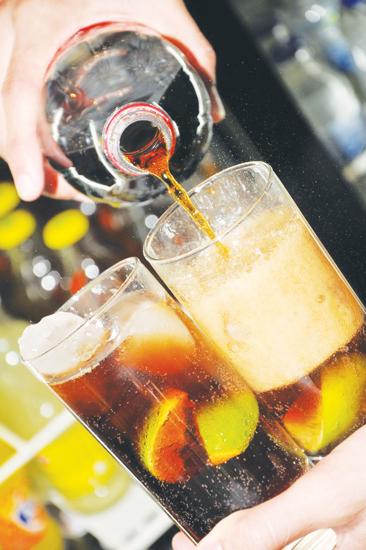Rum and Coke may conjure up memories of college fraternity parties or youthful nights sneaking drinks in your parents’ home. It was probably one of the first mixed drinks you tried, back in the day when Natty Boh and Milwaukee’s Best were your choice of beers.
But if you head 90 miles south of Florida, the rum and Coke has a more romantic vibe. On Castro’s island, it’s called the Cuba Libre and includes the addition of lime juice.
In Cuba, the rum and Coke can trace its earliest beginnings. While the exact circumstances of its birth are unclear, Wayne Curtis, author of “And a Bottle of Rum,” offers a plausible explanation involving Americans soldiers in Cuba during the Spanish-American War. A group of Americans and Cubans were gathered in a bar where the soldiers mixed rum and Coke and called out “Por Cuba libre!” – “To a free Cuba!”
The drink migrated north. During Prohibition, Coke was an easy mixer used to mask the taste of bathtub alcohol, and during World War II, when rum was plentiful and whiskey scarce, its popularity
increased further.
But it was a popular song that blasted the drink into the apex of pop culture. In 1945 the Andrews Sisters’ song “Rum and Coca Cola” entered the charts, where it remained in the number one spot for 10 weeks. The song, which was based on a Calypso song from Trinidad, sold 7 million copies and made rum and Coke an iconic drink for years to come.
Its prevalence endured throughout the generic 50’s into the age of Wonder Bread and canned foods. The drink was simple to mix and required no exotic ingredients.
Going back to its origins, a proper Cuba Libre, made with fresh squeezed lime, can be a refreshing
elixir, especially in the muggy hot Cuban climate. However, while rum flows freely in Cuba, Coca Cola, thanks to the trade embargo, is not readily available everywhere. When your order a Cuba Libre, most bars will mix it with Fiesta Cola, a soft drink packaged in a red can with a white logo that looks suspiciously similar to Coke’s trademark script.
A true Cuba Libre should be mixed with Cuban Rum, which is illegal in the states. Luckily, I found a pleasant alternative during a holiday in Nicaragua. While many Americans associate rum with the Caribbean islands, Flor De Cana rum is as ubiquitous in Nicaragua as Bacardi is now in Puerto Rico.
Whether you are sitting at an open-air restaurant along the Pacific in San Juan del Sur, a colonial
courtyard in Grenada, or at a reggae club on Corn Island, the liquor of choice across the country is Flor de Cana. Any bartender will mix you a “Nica Libre” with Flor de Cana, fresh lime and Latin Coca-Cola. In Latin America, Coke tastes slightly different than what is produced in the states; it’s made with real sugar instead of corn syrup.
But there’s no real need to travel afar. This classic highball can be easily mixed at home. However, if you prefer going out (way, way out), I recommend seeking out Isaiah at the
Best View Hotel on Big Corn Island.
The Nica Libre
2 oz Flor de Cana rum
Juice of ½ lime
Coca Cola
Lime wedge
Add first two ingredients in a tall glass. Fill with ice and coke and stir. Garnish with lime wedge.
Ingredients to make the Nica Libre may be purchased at Dixie Liquor at 3429 M St. in Georgetown.


